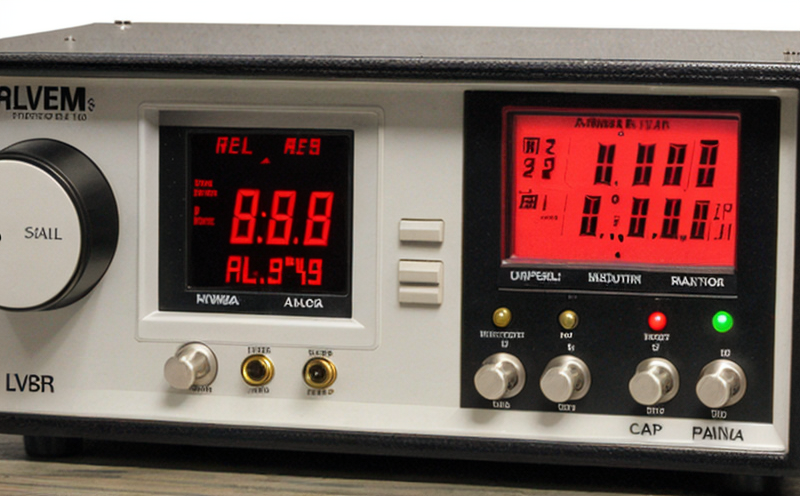ASTM E211 Calibration of Portable Survey Meters
The ASTM E211 standard specifies the procedures and criteria for calibrating portable survey meters used in radiation detection. These instruments are critical tools for ensuring safety, compliance, and accurate measurement in environments where ionizing radiation is present.
Portable survey meters play a vital role in various sectors such as nuclear power plants, medical facilities, research institutions, and industrial processes involving radioactive materials. Ensuring the accuracy of these instruments through periodic calibration not only meets regulatory requirements but also enhances workplace safety by preventing potential errors that could lead to overexposure or underestimation of radiation levels.
The ASTM E211 process involves several key steps which include:
- Selection and preparation of standard sources used for calibrating the survey meter
- Determination of the calibration factor by comparing the readings from the instrument to those from a primary standard source
- Adequate shielding considerations to ensure accurate measurement conditions
- Documentation of all calibration activities, including any adjustments made and their justification
The goal is to establish traceability back to national standards, ensuring consistency across different instruments within an organization or between organizations.
In practical applications, the ASTM E211 standard ensures that portable survey meters are accurate, reliable, and fit for purpose. This is particularly important in industries where radiation exposure needs to be strictly controlled, such as nuclear power generation, medical therapy, and waste disposal operations.
Failure to adhere to standards like ASTM E211 can lead to significant risks including health hazards due to improper monitoring of radiation levels, non-compliance with international regulations (e.g., IEC 60859), and potential legal liabilities resulting from inaccurate or untrustworthy data reported by the instruments.
By implementing ASTM E211 calibration procedures, organizations demonstrate their commitment to maintaining high standards of quality and reliability in radiation detection practices. This contributes positively towards creating safer working environments while ensuring regulatory compliance which is essential for protecting public health and safety.
Why It Matters
The importance of ASTM E211 calibration cannot be overstated, especially considering the critical role that portable survey meters play in radiation detection. Properly calibrated instruments ensure accurate measurement results, which are essential for effective radiation protection strategies and regulatory compliance.
- Health Implications: Inaccurate readings from uncalibrated or poorly maintained survey meters can lead to incorrect exposure assessments, potentially exposing workers to harmful levels of ionizing radiation without realizing it.
- Regulatory Compliance: Many jurisdictions require periodic calibration as part of routine maintenance protocols. Non-compliance may result in fines and penalties for non-conformance with standards such as IEC 60859.
- Safety Measures: Accurate radiation monitoring helps protect personnel from unnecessary exposure during work activities involving radioactive materials or environments.
- Data Integrity: Reliable calibration ensures that data collected by survey meters is trustworthy, facilitating better decision-making processes related to safety protocols and operational procedures.
In summary, adhering to ASTM E211 not only supports best practices in radiation protection but also helps maintain the integrity of health and safety measures across all relevant sectors. Investing time and resources into regular calibration checks ultimately leads to more secure workplaces and peace of mind for everyone involved.
Quality and Reliability Assurance
The quality assurance processes associated with ASTM E211 calibration are designed to ensure that portable survey meters perform consistently across various conditions. This involves rigorous testing procedures aimed at verifying the accuracy, precision, and robustness of each instrument.
- Traceability: Instruments calibrated according to ASTM E211 must have a clear link back to primary reference standards, ensuring consistency throughout the measurement chain.
- Accuracy Checks: Regular checks are performed using known radiation sources to confirm that the meter readings match expected values within acceptable tolerances.
- Precision Testing: Multiple measurements under identical conditions should yield similar results, indicating good precision and reducing variability in output.
- Ruggedness Tests: Exposure to simulated field environments helps assess how well the instrument holds up against real-world challenges like temperature fluctuations or humidity.
These quality assurance measures are crucial for maintaining trustworthiness and reliability, especially when relying on portable survey meters in high-stakes situations where even minor discrepancies could have severe consequences.
By adhering to ASTM E211 guidelines, laboratories ensure that their calibration services meet the highest standards of accuracy and precision. This commitment translates into better protection for workers operating around radiation sources and contributes significantly towards overall safety protocols within facilities handling radioactive materials.
Customer Impact and Satisfaction
The implementation of ASTM E211 calibration has a direct positive impact on both the end-users of portable survey meters and the organizations that employ them. Here’s how:
- Enhanced Safety: Accurate radiation detection ensures that workers are not exposed to excessive levels of ionizing radiation, thereby reducing health risks associated with overexposure.
- Improved Efficiency: Reliable instruments allow operators to perform their tasks more effectively and efficiently without worrying about potential inaccuracies in measurement readings.
- Cost Savings: By preventing costly mistakes due to incorrect data interpretation or non-compliance, organizations can save money on unnecessary repairs, replacements, or additional safety measures.
- Better Decision Making: Dependable calibration results enable informed decisions regarding radiation protection strategies and operational procedures, leading to more effective resource allocation.
In essence, ASTM E211 calibration fosters greater customer satisfaction by delivering peace of mind through enhanced reliability and safety. It demonstrates an organization’s dedication to excellence in radiation detection practices, which ultimately builds strong relationships with stakeholders.





